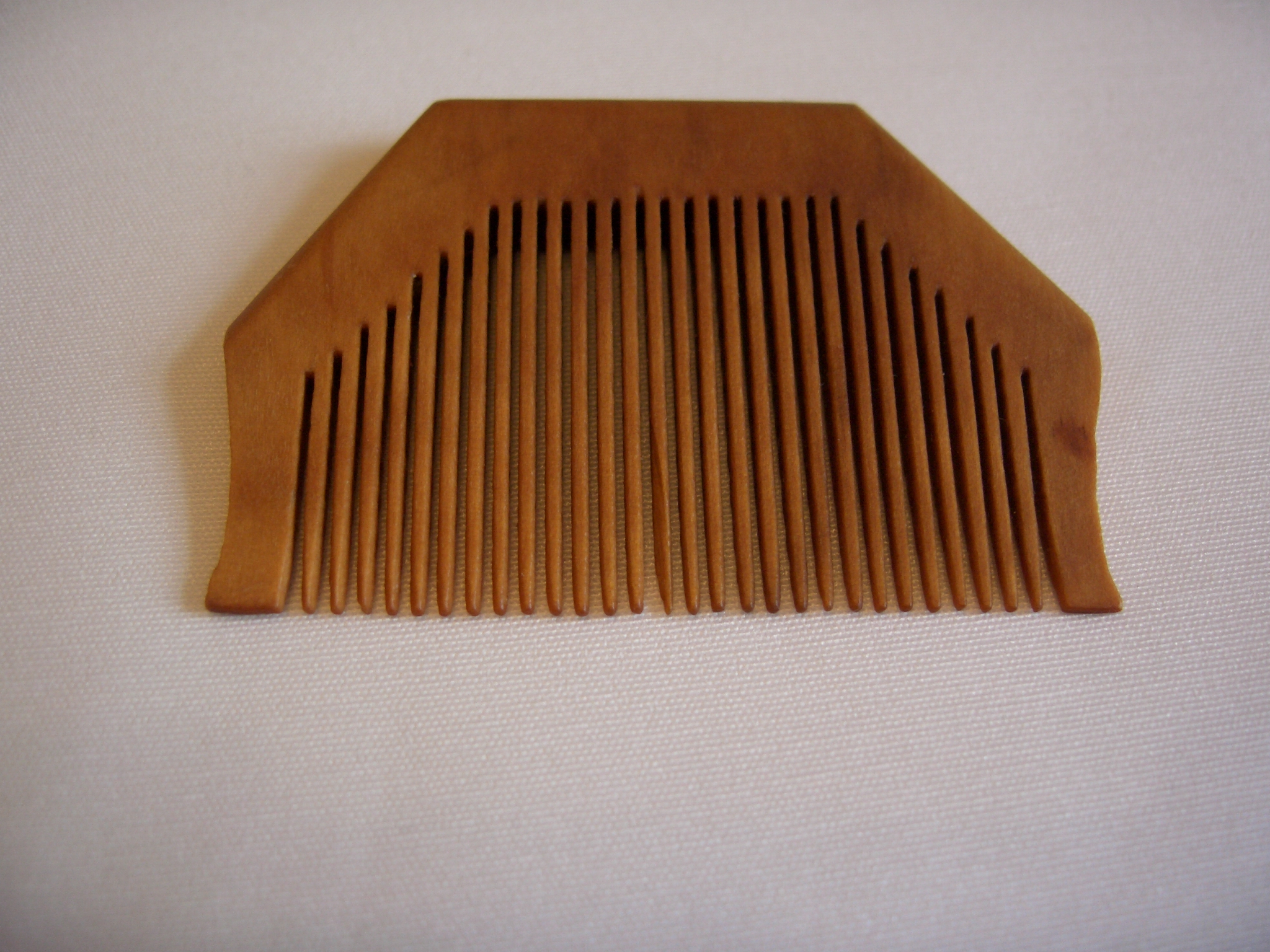Kangha on:
[Wikipedia]
[Google]
[Amazon]
 A ''kangha'' ( pa, ਕੰਘਾ/کنگھا) is a small wooden
A ''kangha'' ( pa, ਕੰਘਾ/کنگھا) is a small wooden
comb
A comb is a tool consisting of a shaft that holds a row of teeth for pulling through the hair to clean, untangle, or style it. Combs have been used since prehistoric times, having been discovered in very refined forms from settlements dating ba ...
that Sikh
Sikhs ( or ; pa, ਸਿੱਖ, ' ) are people who adhere to Sikhism, Sikhism (Sikhi), a Monotheism, monotheistic religion that originated in the late 15th century in the Punjab region of the Indian subcontinent, based on the revelation of Gu ...
s usually use twice a day. It is supposed to be kept with the hair at all times. Combs help to clean the hair, and are a symbol of cleanliness. Combing their hair reminds Sikhs that their lives should be tidy and organised. The kangha makes the uncut hair neat and keeps away tangles. Kanghas were traditionally made of wood, but many modern Sikhs employ ones made of plastic.
History
TheSikh
Sikhs ( or ; pa, ਸਿੱਖ, ' ) are people who adhere to Sikhism, Sikhism (Sikhi), a Monotheism, monotheistic religion that originated in the late 15th century in the Punjab region of the Indian subcontinent, based on the revelation of Gu ...
s were mandated by Guru Gobind Singh
Guru Gobind Singh (; 22 December 1666 – 7 October 1708), born Gobind Das or Gobind Rai the tenth Sikh Guru, a spiritual master, warrior, poet and philosopher. When his father, Guru Tegh Bahadur, was executed by Aurangzeb, Guru Gobind Sin ...
at the Baisakhi Amrit Sanchar
Amrit Sanchar (Gurmukhi: ਅੰਮ੍ਰਿਤ ਸੰਸਕਾਰ "nectar ceremony"; also called Amrit Parchar, or Khande di Pahul ਖੰਡੇ ਦੀ ਪਾਹੁਲ) is one of the four Sikh Sanskaars. The Amrit Sanskar is the initiation rite ...
in 1699 to wear a small comb called a kangha at all times. Kangha must be kept by all baptised Sikhs (Khalsa
Khalsa ( pa, ਖ਼ਾਲਸਾ, , ) refers to both a community that considers Sikhism as its faith,Kha ...
), after a mandatory religious commandment given by Guru Gobind Singh ''(the tenth Guru of Sikhism)'' in 1699.
This was one of five articles of faith, collectively called Kakars
In Sikhism, the Five Ks ( pa, ਪੰਜ ਕਕਾਰ ) are five items that Guru Gobind Singh Ji, in 1699, commanded Khalsa Sikhs to wear at all times. They are: ''kesh'' (unshorn hair and beard since the Sikh decided to keep it), '' kangha'' (a ...
, that form the externally visible symbols to clearly and outwardly display one's commitment and dedication to the order ( Hukam) of the tenth master and become a member of Khalsa
Khalsa ( pa, ਖ਼ਾਲਸਾ, , ) refers to both a community that considers Sikhism as its faith,Kha ...
. The Khalsa is the "Saint-Soldier" of Guru Gobind Singh who stated:
The kangha is an article that allows the Sikh to care for his or her unshorn long hair, Kesh. The kangha is usually tucked behind the " Rishi Knot" and tied under the turban
A turban (from Persian دولبند, ''dulband''; via Middle French ''turbant'') is a type of headwear based on cloth winding. Featuring many variations, it is worn as customary headwear by people of various cultures. Communities with promin ...
. It is to be used twice daily to comb and keep the hair in a disentangled and tidy condition. It represents the importance of discipline and cleanliness to a Sikh way of life and is used to keep the hair healthy, clean, shining and tangle-free. The kangha is tucked under the rishi knot to keep the rishi knot firm and in place.
The kangha is placed in the hair but it is not visible as the Turban (Kesh, another one of the five Ks) covers it.
{{5Ks
Sikh terminology
Sikh religious clothing
Punjabi words and phrases